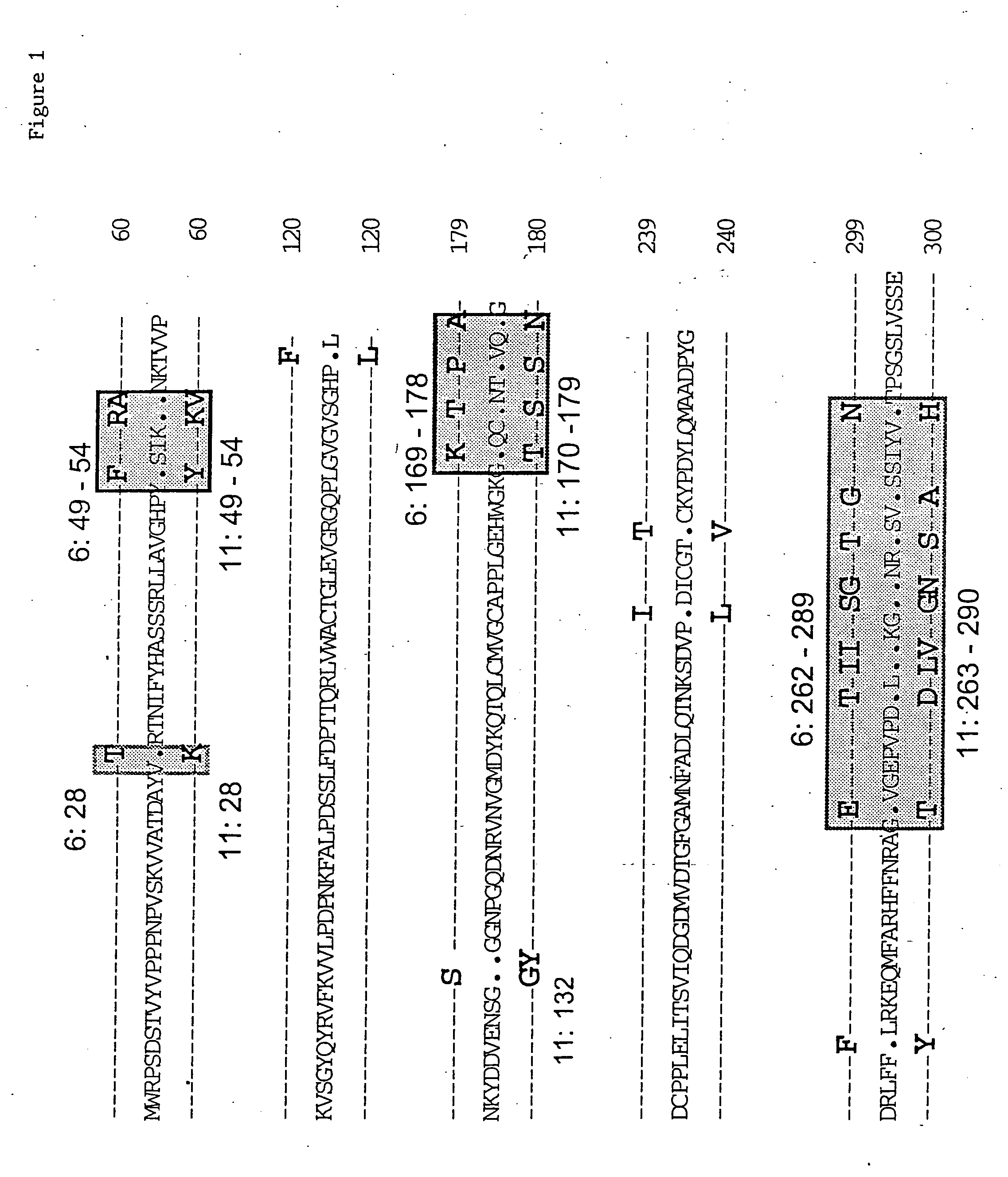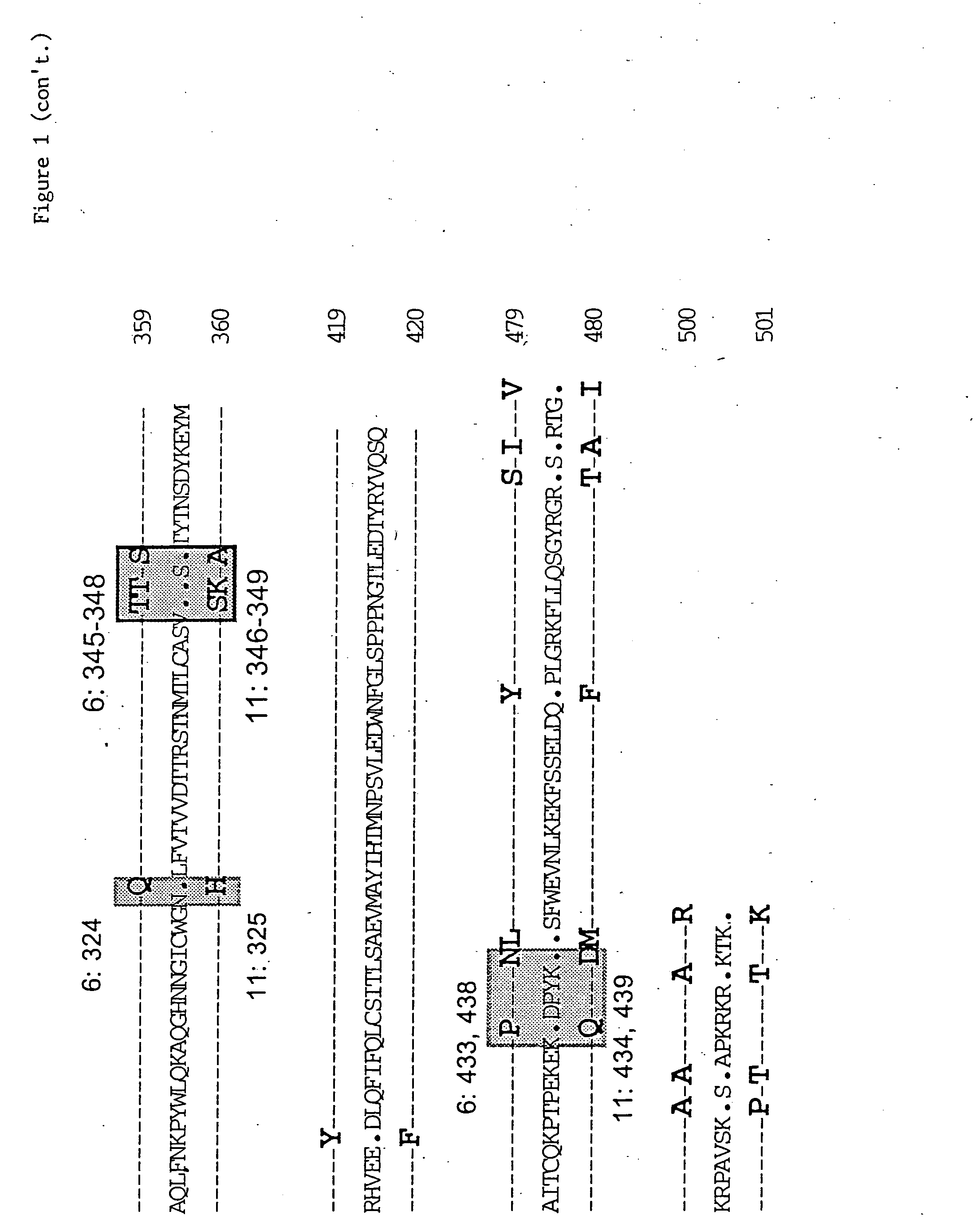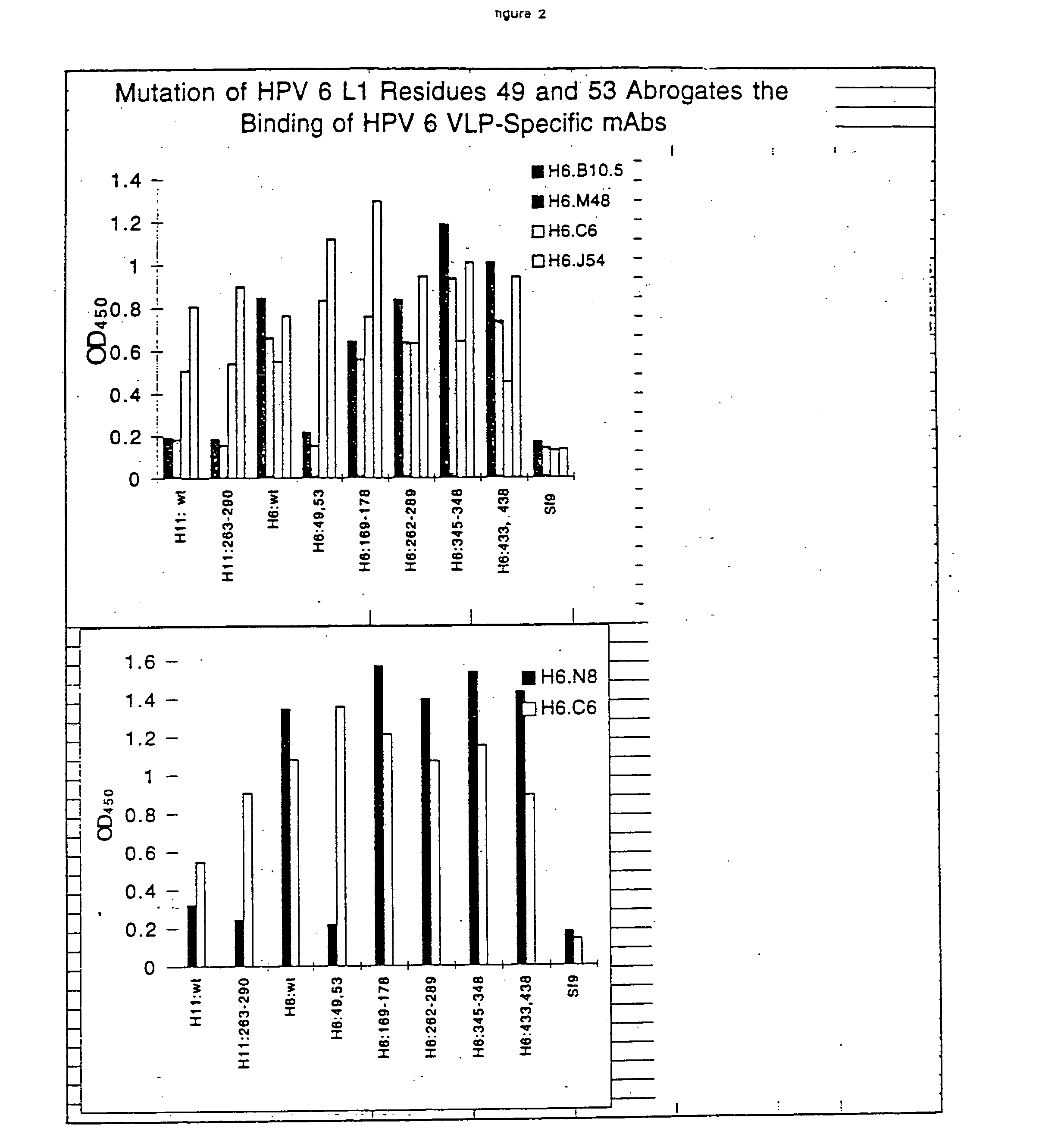Synthetic virus-like particles with heterologous epitopes
a technology of virus-like particles and epitopes, which is applied in the field of synthetic virus-like particles with heterologous epitopes, can solve the problems of difficult to develop reliable assays and studies that did not define which amino acid residues confer type specificity
- Summary
- Abstract
- Description
- Claims
- Application Information
AI Technical Summary
Problems solved by technology
Method used
Image
Examples
example 1
Generation of Test Expression Constructs
[0053] The HPV 6 and HPV 11 L1 structural genes were cloned from clinical isolates using PCR with primers designed from the published L1 sequence. The L1 genes subsequently were subcloned both into BlueScript (Pharmacia) for mutagenesis, and pVL1393 (Stratagene) for expression in Sf9 cells.
[0054] Mutations were introduced into the L1 gene using Amersham Sculptor in vitro mutagenesis kit according to the manufacturer's recommendations. The appearance of the desired mutation was confirmed by sequencing, and the mutated gene subcloned into pVL1393 for expression in Sf9 cells.
example 2
Transient Expression of L1 VLPs in SF9 Cells
[0055] SF9 cells were transfected using BaculoGold Transfection kit (Pharmingen). Transfections were done essentially according to the manufacturer's instructions with the following modifications. 8×108 Sf9 cells were transfected in a 100 mM dish, with 4 μg of BaculoGold DNA and 6 μg of test DNA. Cells were harvested after 6 days and assayed for VLP production.
example 3
Preparation of SF9 Extracts and ELISA Assays
[0056] Cells were harvested six days after transfection, by scraping followed by low speed centrifugation. Cells were resuspended in 300 ml of breaking buffer (1 M NaCl, 0.2 M Tris pH 7.6) and homogenized for 30 minutes on ice using a Polytron PT 1200 B with a PT-DA 1205 / 2-A probe (Brinkman) in a Falcon 1259 tube. Samples were spun at 2500 rpm for 3 minutes to pellet debris. Tubes were washed with an additional 150 ml of breaking buffer, supernatants collected in a 1.5 ml microfuge tube, and respun for 5 minutes in an Eppendorf microfuge (Brinkman). Supernatants were collected and stored at 4 C. until use. ELISA assays typically were performed the same day, although samples may be frozen on dry ice, stored at −80 C., thawed and assayed at convenience.
[0057] 5 ml of extract was diluted into 50 ml of 1% BSA in PBS (phosphate buffered saline; 20 mM NaPO4, pH 7.0, 150 mM NaCl) and plated onto a polystyrene plate. The plate was incubated over...
PUM
 Login to View More
Login to View More Abstract
Description
Claims
Application Information
 Login to View More
Login to View More - R&D
- Intellectual Property
- Life Sciences
- Materials
- Tech Scout
- Unparalleled Data Quality
- Higher Quality Content
- 60% Fewer Hallucinations
Browse by: Latest US Patents, China's latest patents, Technical Efficacy Thesaurus, Application Domain, Technology Topic, Popular Technical Reports.
© 2025 PatSnap. All rights reserved.Legal|Privacy policy|Modern Slavery Act Transparency Statement|Sitemap|About US| Contact US: help@patsnap.com



